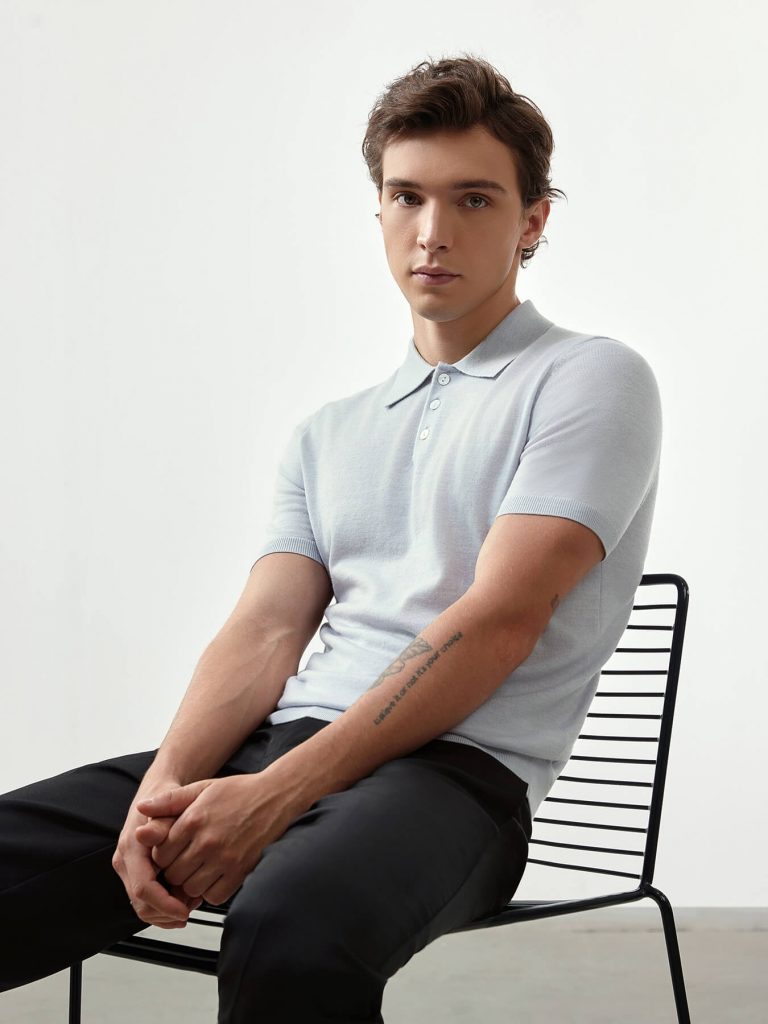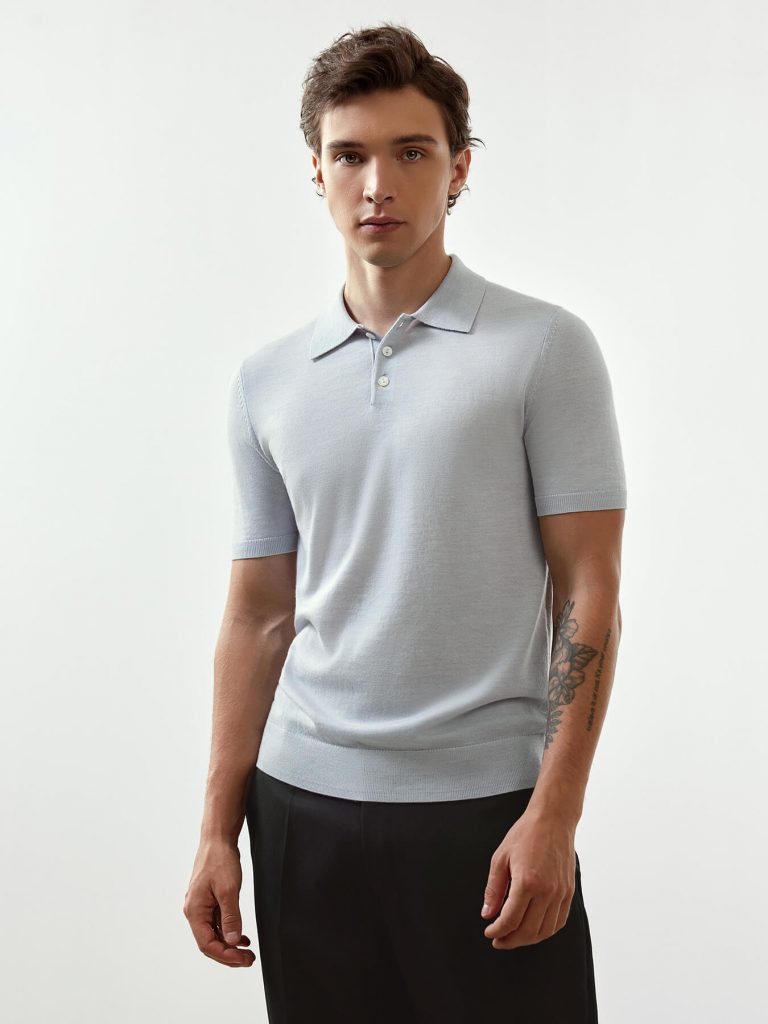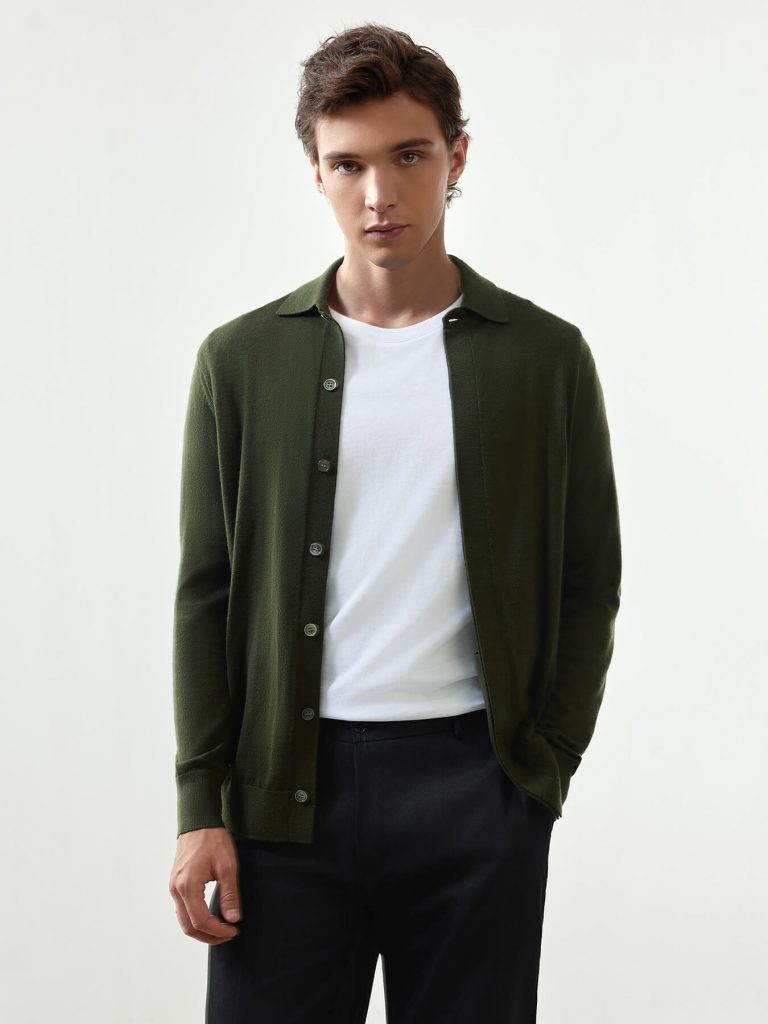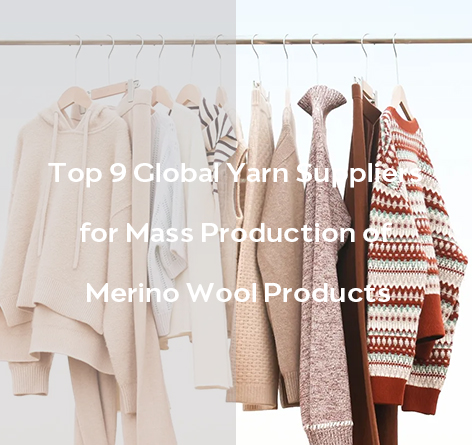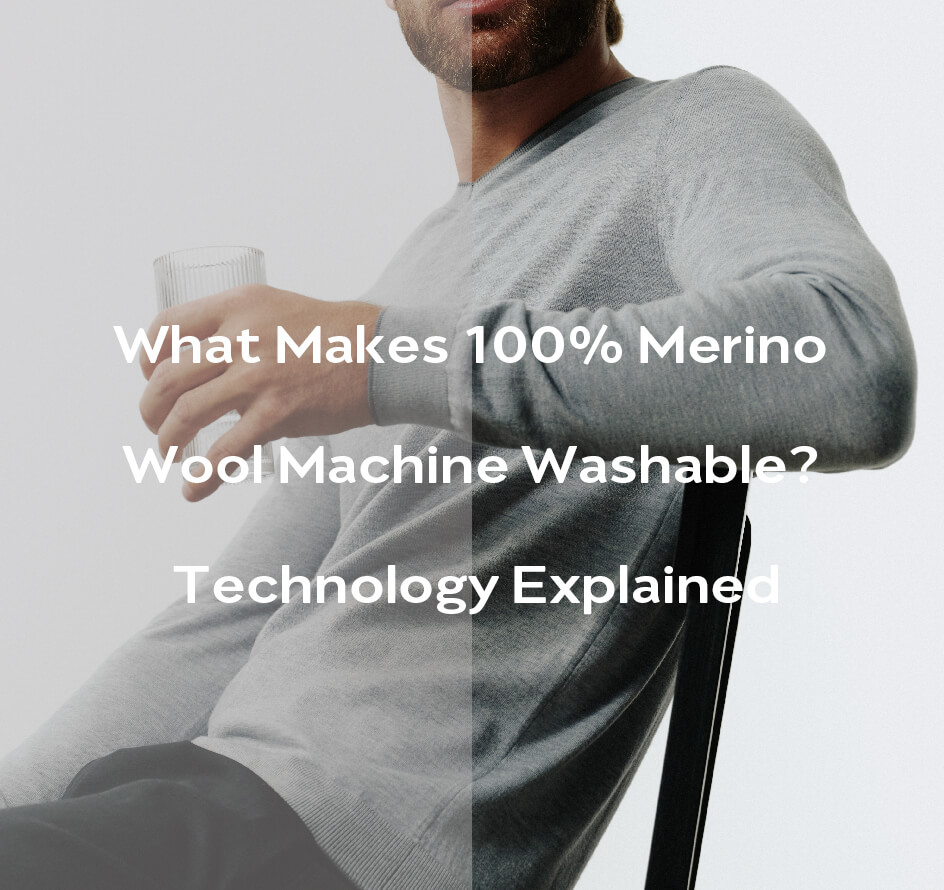Selecting the appropriate fabric is crucial to wholesalers and private labellers who want to maximize profits while still maintaining a consumer base. Merino and cashmere are both popular options that possess unique attributes. Merino wool, derived from merino sheep, has a breathable and moisture-wicking property, this property is ideal for many clothes and also activewear. On the other hand, cashmere is celebrated for its dellish softness and warmth, which is ideal for high-end fashion.
Understanding the differences between these fabrics helps wholesalers to be aware of the market’s demands and preferences, specifically regarding sustainability. This article will discuss the attributes, expenses, and uses of both fabrics, this will provide important information for effective decision-making.
For more information about fabric options, visit Woolmark and learn about environmentally friendly practices at Cashmere and the Environment.
Ⅰ. Understanding Merino Wool
1. What is Merino Wool?
Merino wool is derived from the wool of merino sheep, which were originally bred in Spain, but now are primarily grown in Australia and New Zealand. This type of wool is celebrated for its delicate fibers, which provide superior softness and relaxation compared to regular wool.
2. Key Properties
Merino’s wool has several unique attributes:
- Breathability: The fibers facilitate the flow of air, which is essential for regulating body temperature. This is appropriate for both warm and cool conditions.
- Moisture-Wicking: Merino’s wool can imbibe moisture while still being dry to the touch. It dissipates the heat of the skin, allowing people to remain comfortable during physical exercise.
- Temperature Regulation: Merino’s wool is insulating well, which provides warmth without overheating, this makes it ideal for layering.
- Hypoallergenic: Unlike other types of wool, merino wool has a less propensity to cause skin irritation, which makes it suitable for a larger audience.
Recently, merino wool has become more popular among consumers who are concerned with the environment. Its sustainable procurement and biodegradable nature are in line with the increasing popularity of environmentally friendly fashion. Wholesalers can take advantage of this demand by promoting products that focus on sustainability and performance.
For more information about the unique properties of Merino wool, visit HD Merino, this website is dedicated to the benefits and uses of the versatile fabric.
Ⅱ. Understanding the Cashmere
1. What is Cashmere?

Cashmere is a fabric that is luxurious and made from the soft undercoat fibers of cashmere goats, these fibers are primarily located in regions like Mongolia, China, and Nepal. Famous for its luxurious softness and temperature, cashmere has been a longtime symbol of superiority in fashion, it has been incorporated into high-end clothing and accessories.
2. Key Properties
Cashmere is recognized for its numerous unique attributes:
- Tenderness: The delicate fibers of cashmere produce an incredibly soft fabric, which is one of the most enjoyable to wear.
- Warmth: Cashmere has a superior insulation capacity, which enables the wearer to remain warm even in cold conditions while wearing minimal traditional wool.
- Lightweight: Despite its warmth, cashmere is lightweight, which makes it ideal for stacking and comfortable to wear all day.
- Durability: With proper maintenance, cashmere clothing can have a long lifespan, it is, therefore, a worthwhile purchase.
As consumers are favored by luxury and sustainability, cashmere continues to be popular. Its reputation as a superior material is attractive to customers who are willing to spend money on high-end products. However, the market also has issues, including concerns regarding overgrazing and ethical purchasing practices, these have led many brands to pursue sustainable methods.
To understand the environmental impact of cashmere more fully, visit Cashmere and the Environment, this website provides information about the sustainable production of cashmere. Additionally, you can observe the combinations of merino wool and cashmere in high-end clothing to see how these fibers complement one another.
Ultimately, cashmere is recognized as a superior fabric choice that appeals to those who seek comfort, style, and sustainability in their fashion choices. Wholesalers can capitalize on this trend by creating collections that focus on the luxurious properties of cashmere while addressing the concerns of consumers regarding the sourcing or sustainability of the material.
Ⅲ. Characteristic Comparison
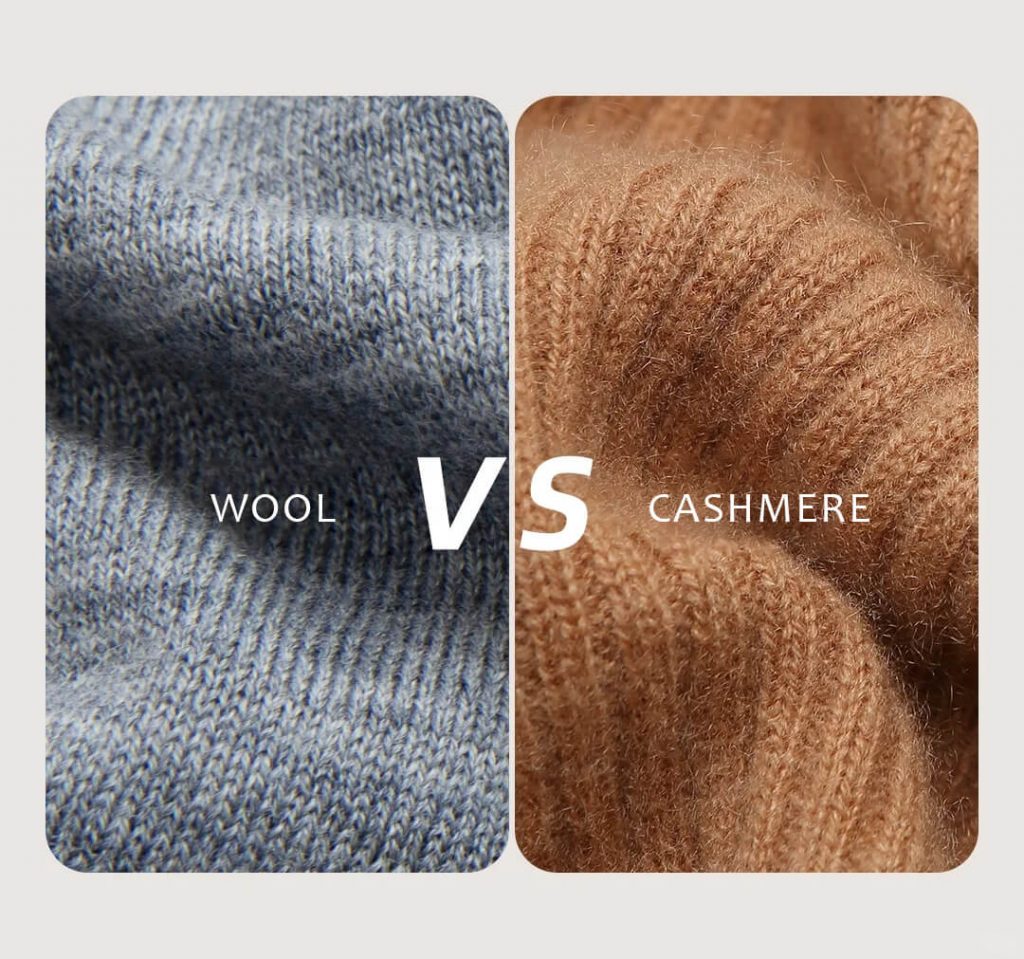
When choosing between merino wool and cashmere, it’s important to understand the difference between these two fabrics regarding their primary characteristics. This comparison will assist wholesalers and private labellers in choosing the appropriate fabric for their products.
1. Softness and Feel
Both Merino wool and cashmere are celebrated for their softness, but cashmere is typically considered more luxurious. Merino wool has a pleasant feel against the skin and is a bit more rough than cashmere, the latter of which has an extra-smooth, plush texture because of its fine fibers. This distinction promotes the appeal of cashmere for high-end clothing, while the Merino breed provides a combination of softness and practicality.
2. Warmth and Insulation
Merino’s wool has a superior insulating quality while still allowing air to flow through it, this is ideal for climates that have a lot of variation. It effectively averts body heat without causing overheating, this allows for a variety of layers. Cashmere is renowned for its superior heat-to-weight ratio, it provides exceptional insulation with little bulk. This quality makes cashmere an exceptional choice for lightweight, yet warm, pieces that are ideal for layered clothing in cold weather.
3. Durability and Longevity
Merino wool is typically more resilient than cashmere, it will not pill or wear like cashmere, which is ideal for everyday clothing. It can withstand harsh washing and regular use without losing its originality or ease. Cashmere is still beneficial with proper treatment, but it is more susceptible to pilling and needs to be handled with care in order to maintain its luxurious feel. As such, cashmere is often considered a special fabric that is valued for its class instead of being used on a daily basis.
4. Maintenance and Care
Merino wool is relatively easy to care for. For daily purchases, you can choose machine washable and odor-resistant ones, this makes it a low-maintenance option for consumers. On the other hand, cashmere requires more careful upkeep, typically needing hand washing or dry cleaning to preserve its softness and shape. This disparity in maintenance can have an effect on consumers’ decisions, particularly those who seek practicality over luxury.
5. Knitwear Design Differences
When manufacturing knitwear with Merino wool and cashmere, wholesalers must pay attention to several important aspects:
- Fabric Properties:
understand the singular characteristics of each fibre. The Merino’s wool is malleable and can be designed in a fitted style, while the cashmere’s drape promotes flowing silhouettes. Select designs that fit these properties.
- Texture and Pattern:
Merino wool is capable of supporting intricate patterns due to its consistency, while cashmere is soft and ideal for delicate lace design. Think about how patterns and textures will combine with the fabric’s feel.
- Weight and Warmth:
Cashmere is both lightweight and warm, which makes it ideal for stacking. Designs that focus on this quality, such as lightweight cardigans or small-turTLENecks. Merino wool is heavier and is appropriate for more formal garments.
- Consumer Use Cases:
Consider the ultimate purpose of the clothing. Merino wool is effective for both activewear and everyday wear, while cashmere is typically reserved for special occasions and luxury. Corresponds with consumer desires regarding design.
- Sustainability:
As the popularity of environmentally friendly materials grows, consider sourcing sustainably produced Merino wool and cashmere. Highlighting environmentally friendly practices in design can enhance the popularity of the market.
By paying attention to these design aspects, wholesalers can create apparel that satisfies the needs of their intended audience, while also highlighting the benefits of both Merino wool and cashmere.
For more information about wool and its uses, you can visit The Woolmark Company and explore HD Merino for additional information about merino products. This understanding not only increases the products’ offering but also matches the consumer’s preferences for quality and comfort.
Ⅳ. Cost Analysis
Understanding the expenses associated with different types of wool is crucial to those who want to maximize their revenue from wholesaling and personalizing. These fabrics are not only price-dependent but also demand-dependent on their properties and the market as a whole.
1. Pricing Structure
- Merino wool:
It’s typically more budget-friendly than cashmere, the price of merino wool can change from $15 to $50 per meter(yarn prices range from $30 to $80 per kg), depending on the quality and origin. This accessibility makes it a popular option for large purchases and regular clothing. The increasing supply chain and advances in environmentally friendly farming have also contributed to price stability.
- Cashmere:
Cashmere is typically considered a high-end fabric, with prices starting at $30 and going up to over $100 per meter(yarn prices range from $125 to $285 per kg). The expense is affected by factors like the fiber quality of the goat’s hair, the breed of goat, and the way they are sourced. The limited availability of the product and the labor-intensive process of obtaining cashmere contributes to its higher price, making it a high-end choice for products with high value.
2. Cost-Effectiveness
When determining the cost-effectiveness of a market, consider the intended consumer and clothing type. Merino wool has a variety of benefits that make it appropriate for a larger audience, including activewear and everyday wear. On the other hand, cashmere’s higher cost reflects its luxury reputation and long-lasting nature, which can justify the investment for high-end or specialty items.
3. Consumer Willingness to Pay
Market trends indicate an increasing popularity of consumers who are willing to spend money on high quality clothing, particularly that which is environmentally friendly and sustainable. wholesalers should consider their intended demographics in order to determine the most appropriate pricing strategy. Products derived from sustainably sourced Merino wool or ethically produced cashmere have the potential to be more expensive because of their perceived value.
4. Market Trends
As the preferences of consumers for sustainable and high quality fabrics shift, understanding the behavior of merino wool and cashmere is crucial. Wholesalers can capitalize on these trends by providing a transparent pricing mechanism and promoting the benefits of their selected fabrics.
Ⅴ. Consumer Demand and Market Trends
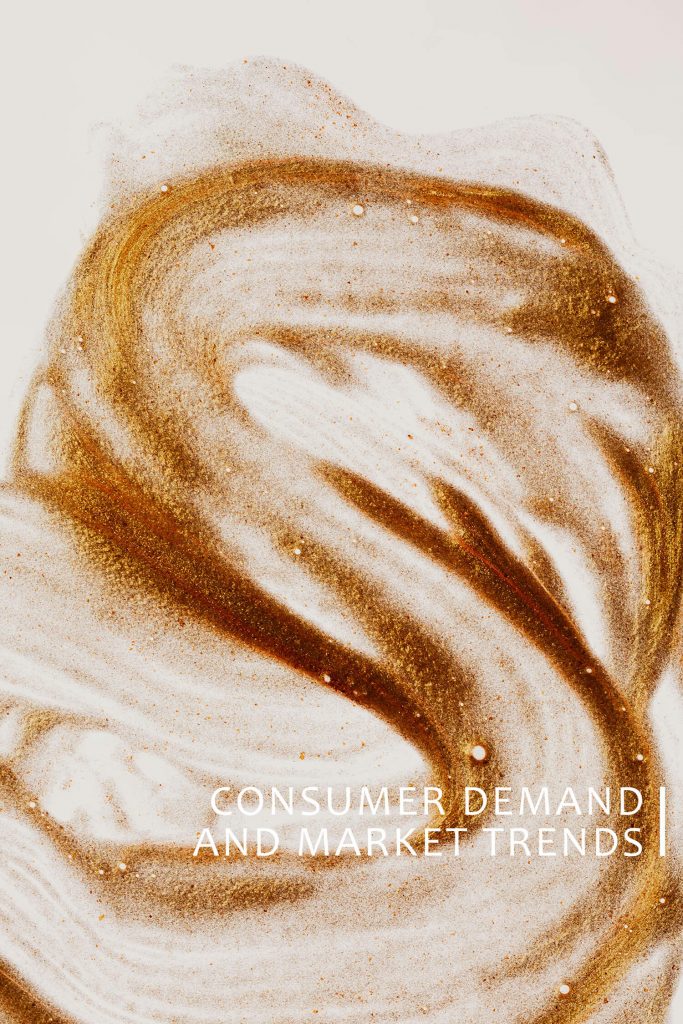
Understanding consumers’ demands and the current trends in the market is crucial to wholesalers and private labellers in order to effectively promote the Merino breed of wool and cashmere in their products.
1. Current Trends in Fabric Preferences
Recent information suggests a significant shift in the direction of sustainability in consumers’ preferences. A report by McKinsey & Company suggests that 67% of consumers take into consideration the sustainability of fashion when purchasing it. This trend is particularly pertinent to merino wool, which is typically marketed as an environmentally friendly product because of its biodegradable properties and sustainable farming methods. Conversely, cashmere has experienced an increase in demand as consumers have sought out luxury and quality products, with a focus on environmentally responsible products. The desire for top-notch, long-lasting luxury is fueling the interest in cashmere, especially among wealthier consumers.
2. Target Demographics
Both Merino wool and cashmere have a distinct consumer base, which is more concerned with sustainability and luxury. Younger, environmentally conscious consumers are attracted to the Merino breed of wool because of its versatility and performance attributes, they often seek out activewear and everyday garments that concur with their environmental beliefs. Meanwhile, cashmere is typically targeted by a more fortunate demographic, including consumers who are between 30 and 55 years old and who prioritize quality, fashionable pieces. This section of the population is increasingly concerned with transparency in the sourcing of materials and with the value of ethical considerations, this makes both fabrics relevant in today’s society.
3. Sales Channels and Strategies
Wholesalers have the ability to utilize multiple sales methods and marketing strategies regarding both fabric types. Online platforms and social media are essential for reaching younger consumers, particularly in the case of merino wool, where the highlighting of performance attributes and sustainability can inspire interest. partnerships with environmentally conscious brands and influencers can further increase awareness. For Cashmere, promoting premium retail experiences, exclusive collections, and narratives about the manufacturing process can attract consumers of luxury goods. Maintaining ethical practices regarding sourcing and building trust through transparency is crucial to both demographics in order to promote loyalty and repeated purchases.
Ⅵ. Use Cases and Applications
Understanding the uses of Merino wool and cashmere is crucial to both wholesalers and individual branders who want to effectively promote these textiles to their intended audiences.
1. Merino Wool Applications
Merino wool’s versatility is exceptional, which is why it’s popular in a variety of areas, particularly in activewear, clothing for the outdoors, and everyday wear. Its capacity to breathe, its moisture-wicking properties, and its temperature-regulating capabilities are all properties that make it an exceptional choice for athletic clothing. Many athletes enjoy the Merino wool found in the base layers, this fabric prevents them from having to sweat excessively during intense exercise. Additionally, its softness and resilience make it ideal for outdoor clothing, such as hiking and skiing apparel, the purpose of comfort and sustainability is paramount. Everyday wear, such as sweaters and tees, is facilitated by the versatile nature of merino wool and the ease of maintenance it provides, all of which are combined with a fashionable appeal. These benefits are intended for consumers who want both functionality and fashion.
2. Cashmere Applications
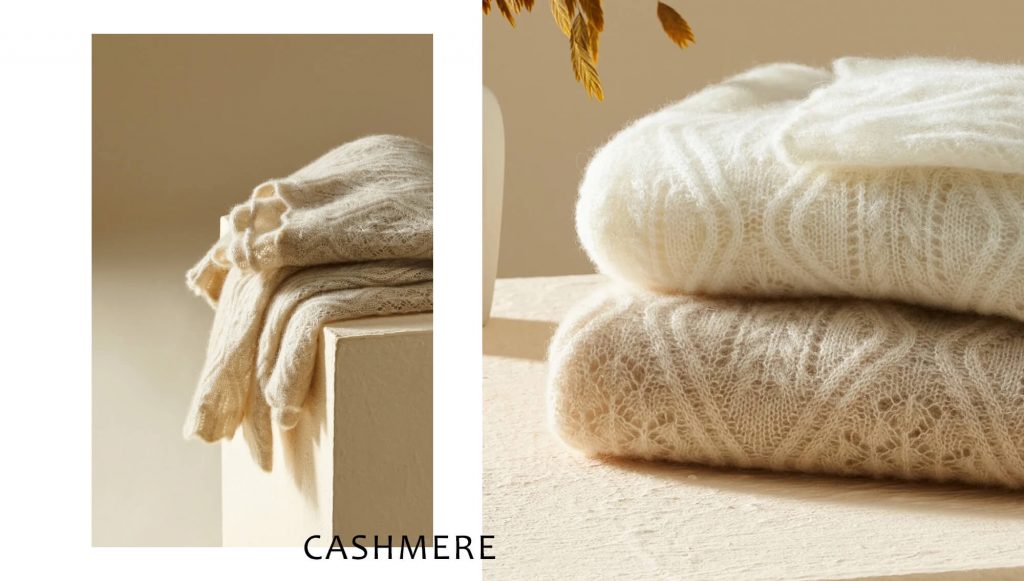
Cashmere is associated with luxury, which is ideal for high-end clothing, accessories, and home goods. Its extra-soft fabric and superior temperature make it a popular choice for premium sweaters, cardigans, and scarves that promote fashion and comfort. In the accessory market, cashmere hats, gloves, and wraps have a luxurious feel while providing warmth. Beyond the clothing itself, cashmere is increasingly utilized in high-end home goods, such as throws and blankets, that are intended for consumers who seek quality and sophistication in their homes.
3. Positioning in Different Markets
Effective marketing of Merino wool and cashmere necessitates custom strategies for specific consumer segments. Merino wool focuses on its performance characteristics and sustainability, intended for active, environmentally conscious consumers. Highlight partnerships with popular brands that specialize in outdoor activities and promote the versatility of everyday fashion in order to reach a larger audience. Conversely, cashmere marketing should concentrate on the luxury nature of the product and the craftsmanship associated with it. Use narrative-based storytelling to connect with consumers who are financially successful and have an ethical approach to sourcing, this will enhance the value of high-quality, legally responsible products. Participating in partnerships with large retailers can help to increase awareness in the luxury market.
Ⅶ. Conclusion
In this investigation of Merino wool and cashmere, we have studied their singular characteristics, uses, and market conditions. Merino wool is recognized for its breathability, moisture-wicking abilities, and durability, these properties make it ideal for activewear and outdoors. Conversely, cashmere is associated with luxury, it provides a unique combination of softness and warmth that is ideal for high-end clothing and accessories.
As the demand for environmentally friendly and superior fabrics continues to increase, blended fabric is an exciting option for retailers. By combining the benefits of merino wool with cashmere, brands can create products that are versatile and appeal to consumers who want both luxury and performance. Combined fabric types can increase the durability of the product, reduce costs, and expand the product line, all of which are ultimately addressed by the diverse consumer.
When purchasing a garment, it’s important to consider the properties of each fabric material, the current popularity of sustainability, and the increasing importance of efficiency. Understanding these factors will enable businesses to make decisions that are informed by the consumer and the demands of the market.
For additional information about the properties of fabric and the dynamics of the market, visit The Woolmark Company and explore HD Merino for resources about Merino wool products. By taking these ideas, wholesalers can augment their product lineup and serve their customers more effectively in a changing market.
Integrating sustainability, performance, and luxury into fabric choices will not only attract consumers who are aware of the concept but will also help to position wholesalers for long-term success in a competitive industry.



